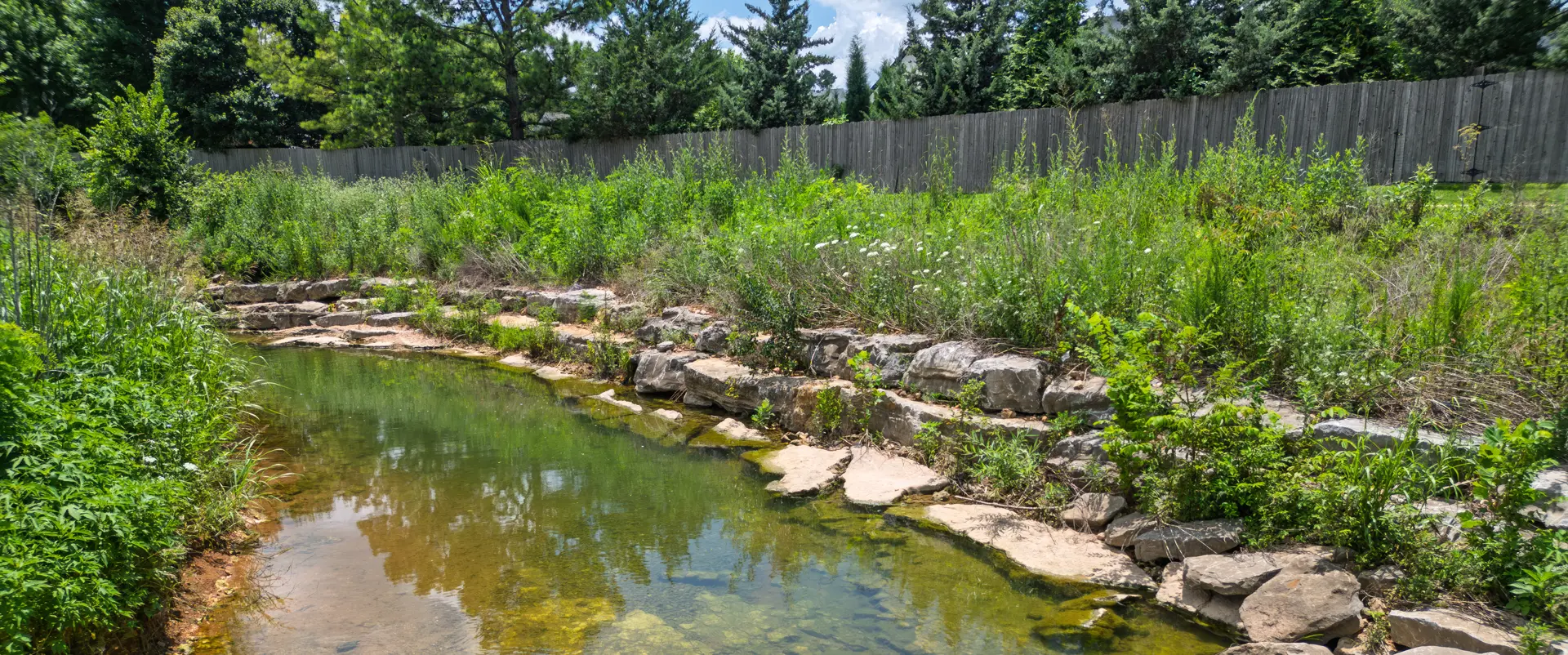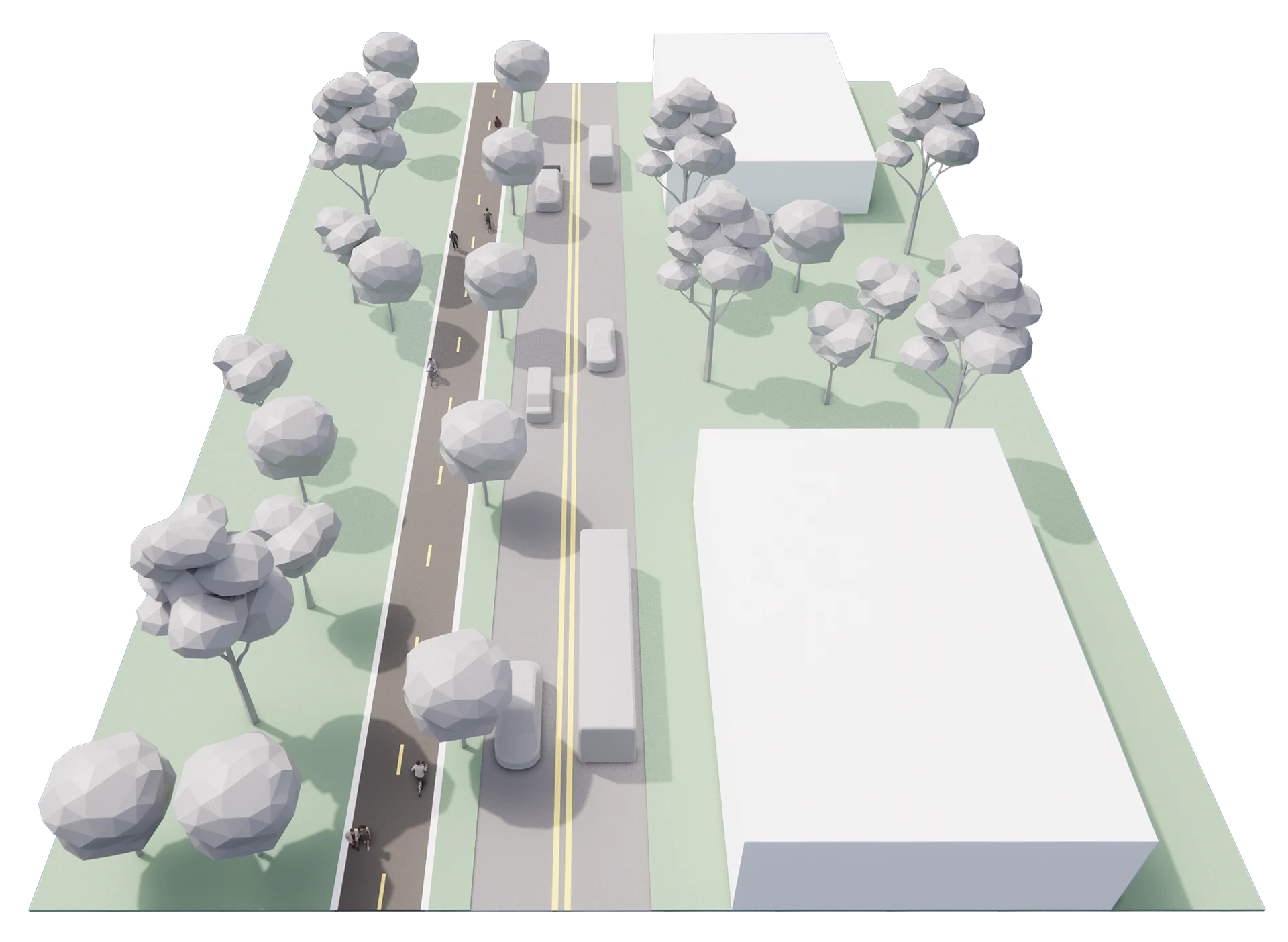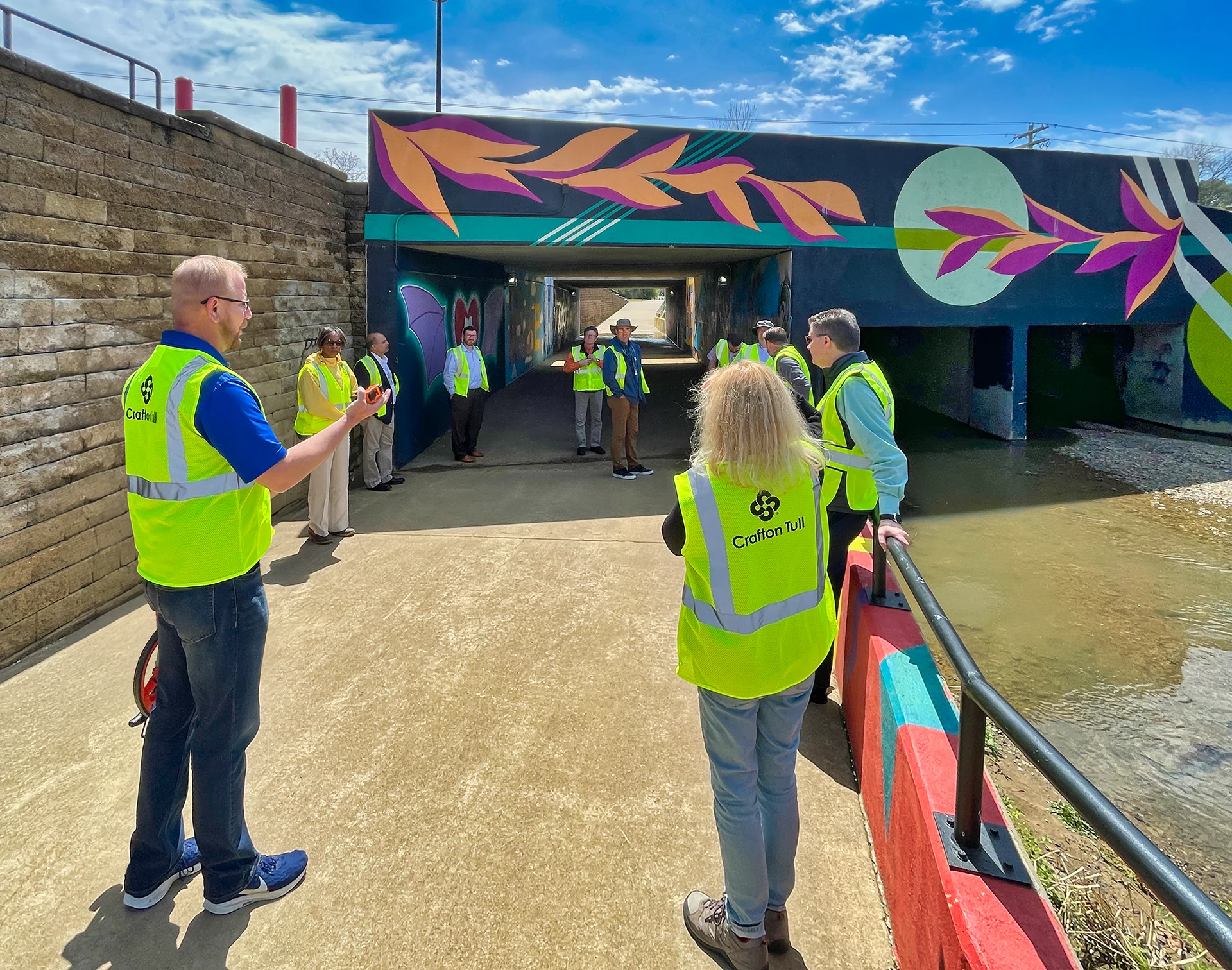INSIGHTS

David Rupe
Vice President - EnvironmentalAttracting job-creating industries to invest in your community is hard work. It often requires years of planning, partnerships, and perseverance to outcompete the dozens of cities and states vying for the same investment opportunity.
One of the major selling points a community can offer a business looking to expand is a shovel-ready site. Environmental due diligence, along with transportation access, utility availability, and land use approvals are all key components of a site that’s ready for fast-track development. A shovel-ready site reduces risk and uncertainty for investors and can be the difference between getting short-listed for a job-creating project or missing the cut.
As an environmental scientist, my role in economic development projects is on the front end, most often as land is under consideration for potential investment. My advice for forward-thinking communities with a specific site they’d like to market is to undergo some basic environmental due diligence before having serious talks with prospective companies and site selectors.
Environmental due diligence is a relatively inexpensive investment that, when made early on, can make a site more attractive. It can lend credibility to the team offering the site and provide assurance that a potential large-scale project is viable.
 Environmental compliance may seem cumbersome at times, but each community is playing by the same rules, which exist to protect our health and preserve our natural resources.
Environmental compliance may seem cumbersome at times, but each community is playing by the same rules, which exist to protect our health and preserve our natural resources.
“We live and do business in the Natural State, and we want it to remain beautiful,” said Jeremy Biggs, vice president of economic development at the Rogers-Lowell Chamber. Biggs said anyone involved in the site selection process would benefit from having a basic understanding of the importance of environmental due diligence.
Here are three areas of environmental compliance that often intersect with economic development projects before breaking ground.
Wetland Delineations
A wetland delineation is a process used to identify and map where wetlands, streams, ponds, and other aquatic resources are located on a property. Environmental scientists visit the site to assess soil, water, and vegetation to determine if an area meets the criteria to be considered a wetland under federal or state regulations. If regulated by the U.S. Army Corps of Engineers, wetlands and other aquatic resources are protected, which means building on them may require Section 404 permits.
Phase 1 Environmental Site Assessment (ESA)
Phase 1 ESAs identify potential environmental contamination or hazards on a property before a transaction or development begins. Phase 1 ESAs consist of a review of historical property records, an on-site visual inspection for hazardous substances, discussions with property owners, and a regulatory compliance check.
National Environmental Policy Act (NEPA)
NEPA requires federal agencies to assess the environmental impacts of their actions before making decisions. If a project uses federal funds (including economic development grants), or in certain instances if there is a federal nexus, a NEPA review is required. NEPA reviews can take anywhere from a few months to two years and can require public comment.
Environmental compliance is complex and ever-changing. Before marketing land to potential industries, it’s important for community leaders to understand the potential delays environmental regulations can trigger if not addressed early. Environmental due diligence can help paint a clearer picture of the kinds of permitting — and the kind of timeline — a site or a particular project will require.
Dana Poindexter is the southwest Arkansas regional manager with the Arkansas Economic Development Commission (AEDC). She said the State of Arkansas recognizes the competitive advantage a shovel-ready site can offer when it comes to attracting new industries.
“Speed wins projects,” Poindexter said. “Any time you can show a company how quickly you can get them from spending money to making money, it is an advantage.”
The State, with the support of the Governor’s Office, allocated $10 million to launch the Site Development Grant Program in 2024. The program provides matching funds for site development improvement activities that will enhance industrial site readiness and competitiveness for certain projects. In its first year, the program received 28 requests totaling more than $44 million. The success of the program has allowed the AEDC to reopen these grants for the next two years with $25 million allocated each year.
Site due diligence study costs are eligible for grant funding, along with other site development-related projects like right-of-way acquisition and public infrastructure improvements.
“Site readiness isn’t just about land. It’s about speed, confidence, and removing risk for industry,” Poindexter said. “The communities doing the work now, including studies, permitting, and infrastructure, are the ones that are better positioned to get the visits later.”
Walkable Downtowns Drive Economic Development

Dave Roberts, PLA, ASLA
Senior Vice President - Planning & Business DevelopmentMany cities prioritize improving walkability in downtowns and commercial areas, not just to enhance safety or to develop community character, but because there is real potential for financial return on investment. Investments in walkability, which measures an area’s ease of connectivity via non-vehicular transportation, can include sidewalks, multi-use paths, streetscape enhancements, and traffic-calming measures. While these projects might be more often categorized as infrastructure, they do much more than provide a mode of transportation. They have the power to transform local economies.
Places where people feel safe and comfortable walking are places where businesses can thrive. Bustling downtown districts offer a variety of things to do - restaurants, coffee shops, art galleries, and breweries - all within walking distance of one another. Increased foot traffic creates higher property values in these areas and the surrounding neighborhoods as well. Over time, the tax value per acre in these dense, walkable areas will outpace areas that are more dependent on vehicular traffic. This has been confirmed in multiple studies by Urban3, a company specializing in revenue modeling and cost of service analysis for cities.
Not only do these compact, walkable places generate more tax revenue per acre, they require less extensive infrastructure networks compared to sprawling, car-dependent developments. For cities, this results in lower costs for road maintenance, utilities, and public services. It’s a win-win.
Pathways to Progress: How RAISE Grants Can Strengthen Arkansas

Isaac Sims, AICP, PCED
Planner III - PlanningSigned into law in 2021, the Bipartisan Infrastructure Law (BIL) allocated $550 million for transportation, resilience and broadband infrastructure, the largest such investment in the history of the United States. Similar infrastructure programs have provided funds in the past to states, counties, metropolitan planning organizations and municipalities to build and repair new roads, bridges and trail systems.
The priority for clean and equitable transportation modes, such as bicycling and walking, can be found in the title of this new grant program: Rebuilding American Infrastructure with Sustainability and Equity, or RAISE. In Arkansas, adding more trails makes sense when considering solutions to local transportation issues, primarily due to the reality that most cities are too small to support public transit (beyond on-demand systems). Only the largest metropolitan regions in the state, Central Arkansas and Northwest Arkansas, have the population threshold necessary to support public transit. When integrated into a regional transportation framework, trails become not only recreation options, but practical transportation modes, turning a car trip of less than a mile into a 5-minute bike ride or a 20-minute walk.
The U.S. DOT has awarded two Arkansas communities with RAISE grants for comprehensive trail networks (with two additional trail projects awarded to ArDOT and ADPHT). In 2022, Conway was awarded a $24.6 million RAISE grant to construct 15 miles of separated multi-use trails. Just one year later, Russellville won $23.4 million to construct a similar 13-mile network. Most recently, Searcy was awarded $4.2 million, the largest grant award in the City’s history, for the planning portion of a 21-mile trail network. All three communities competed against significantly larger metropolitan areas and cities across the country for multimillion-dollar transportation grants – and won.

The availability of RAISE funding can provide hope for small to mid-sized cities seeking to decrease stress on local roadways while providing transportation solutions for vulnerable populations. While Conway just recently launched a micro transit option for its citizens, Russellville has no public transit, leaving bicycling and walking as the remaining transportation options for those without access to a car. This includes individuals with disabilities who would otherwise participate in the workforce, children within walking distance of their school who could participate in walk-to-school programs or anyone desiring clean and affordable transportation options.
Crafton Tull has provided grant application support for Arkansas communities that has resulted in federal and state grant awards for trail projects. Federal grants require a high level of detail and copious amounts of technical data to support the demonstrated need for active transportation investment. The most important ingredient in a RAISE grant submission is a clear, accurate, and concise telling of your community’s story. Our experience has revealed three crucial steps for aspiring communities to take in preparing their application.
1. Engage Your Community

Public engagement is a critical piece of the RAISE Grant application process
Public engagement is an integral component of the RAISE process, taking the form of public meetings, stakeholder interviews or web-based surveys. Citizens need to show support and excitement for the plan, demonstrated through recorded input that can be reflected in the grant application. Some communities may choose to pursue RAISE funding following a successful bicycle and pedestrian planning process, and other cities may choose a similar approach of engaging the public during a plan update.
Cities lacking any history of public engagement surrounding bicycling and walking should not be discouraged: effective public engagement can be conducted in a time period as short as three months. Some communities may choose to hold stakeholder interviews to gather feedback from major employers, nonprofits, school superintendents and other community leaders regarding where they see their constituents bicycling and walking, and what routes they take.
2. Form a Team
Another common denominator among Arkansas’ successful RAISE applications is collaborative interdepartmental communication. In Russellville, the planning, streets, parks and recreation departments, as well as administrative and financial divisions of the City set regular weekly meetings to coordinate, share input and write sections of the grant together. Grant writers employed by a city will rely on the knowledge and expertise of these departments. Where expertise may be lacking at the city level, a firm like Crafton Tull can provide cost estimates, 3D renderings, and supplemental grant writing.